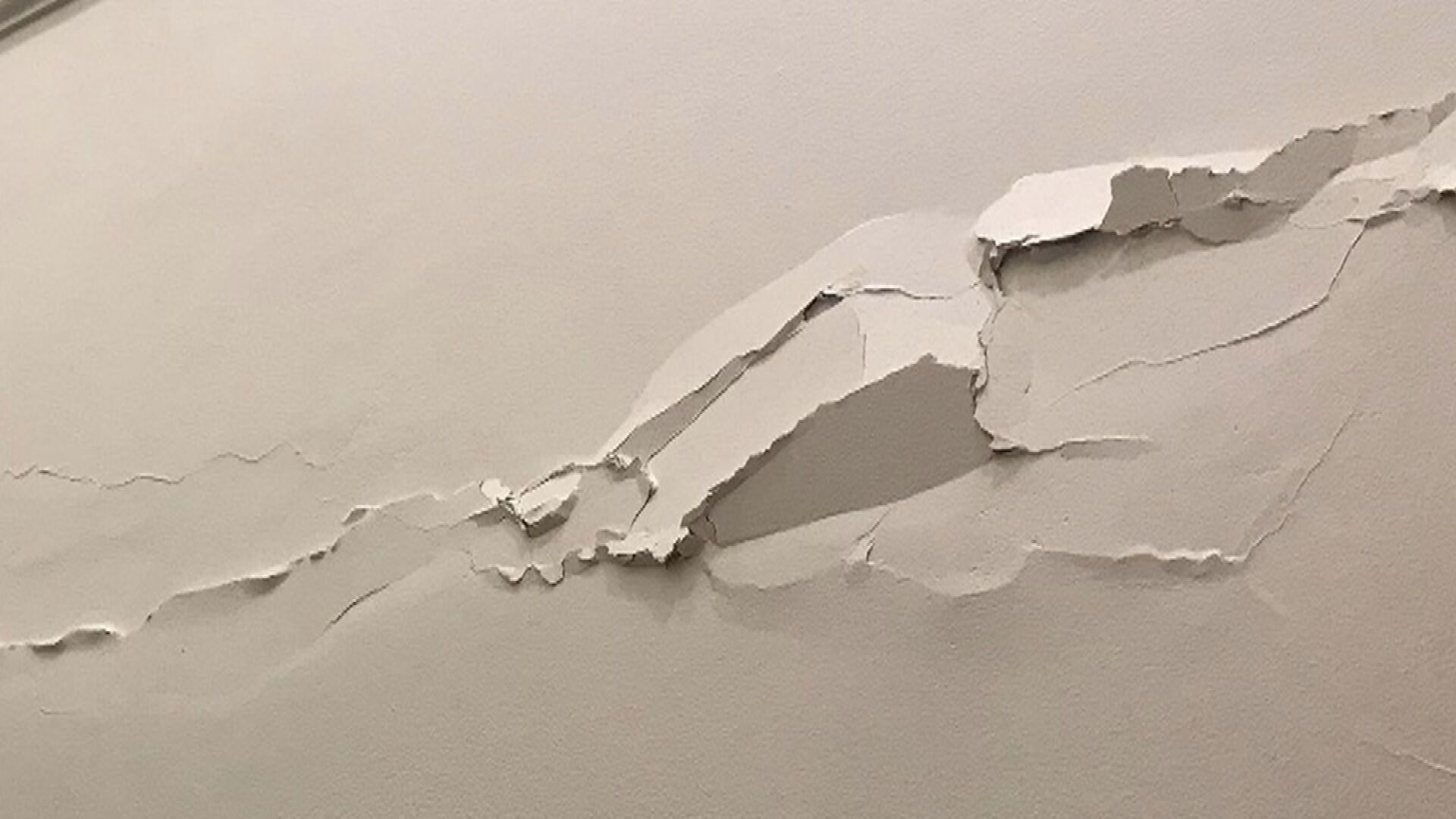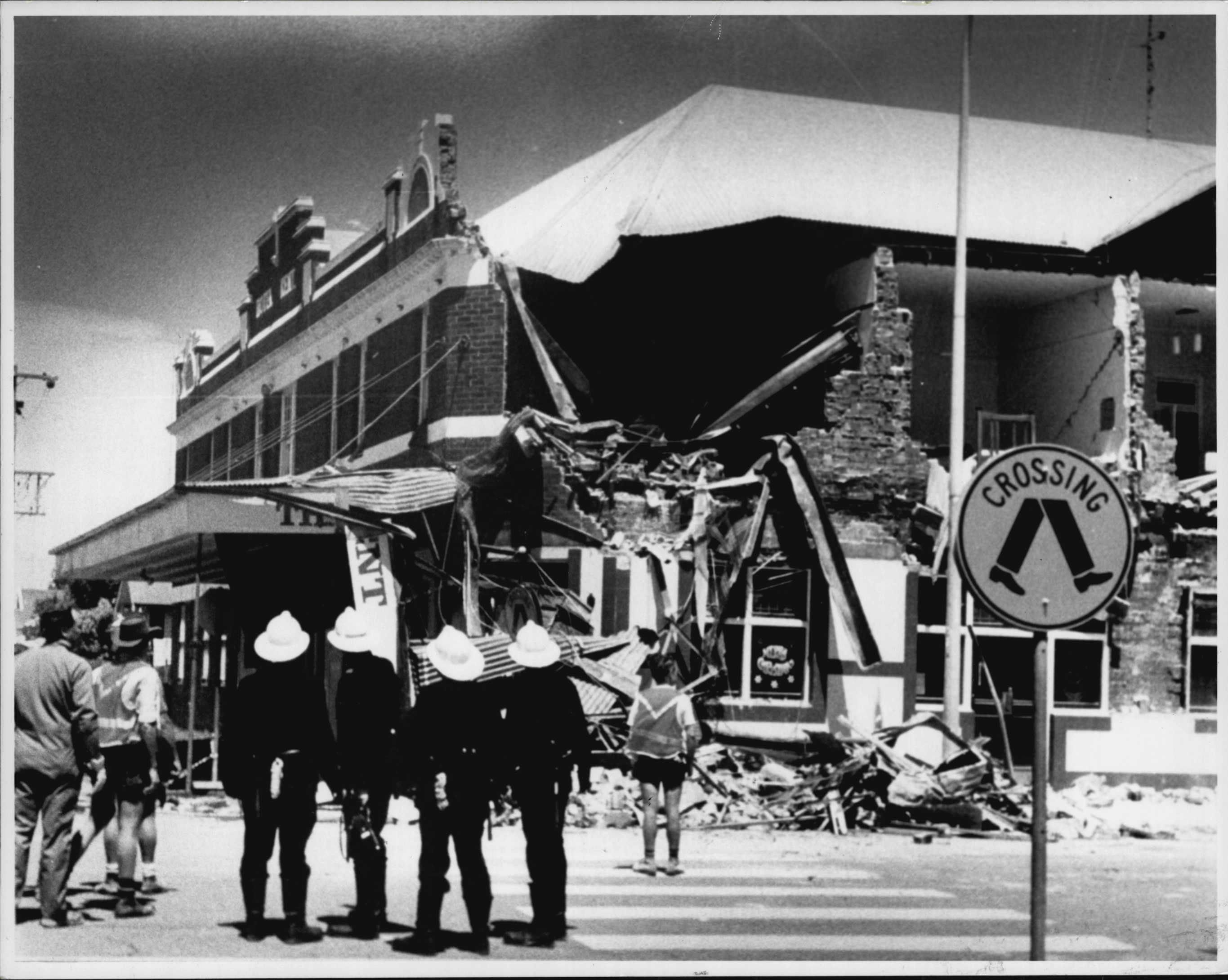Although rare, "earthquakes can occur anywhere in Australia," a senior seismologist with Geoscience Australia says, before adding the country "can be at risk of large earthquakes," too.
That matter-of-fact comments come after Melbourne was rattled by what was initially believed to be a 3.8-magnitude quake on Sunday, the city's largest in more than 120 years.
This was later upgraded to 4.0-magnitude and comes two years after Woods Point in Victoria's east, was struck by a 5.8-magnitude quake; Victoria's largest ever recorded.
READ MORE: History of Australia's most destructive earthquakes

Professor Phil Cummins, a senior seismologist at Geoscience Australia, listed three more cities he believes are most at risk of quakes.
"Adelaide springs to mind," Cummins told 9news.com.au.
"That's in one of these elevated seismic zones, there are some known active faults near Adelaide.
"Canberra also. It's a bit unusual in that after the last assessment it's hazard went up as we realised earthquakes have occurred on the Lake George fault.
"(But) probably the capital that experiences the most shaking is Darwin and that's due to the earthquakes in Indonesia, which happen fairly often.
"They could get big enough to cause minor damage maybe, but I think it's a big enough distance that we will just see shaking that frightens people."
READ MORE: What is behind this NSW lake's great disappearing act?

Cummins added the Australian National Seismic Hazards Assessment map thinks 7.5-magnitude quakes are possible on our golden soil.
"That's a pretty big earthquake, not quite as big as the ones you'd get in the United States and Los Angeles, but it's quite large," he said.
"Larger than anything we've experienced so far.
"We think it's possible to get earthquakes that big, and we do think there's evidence in the geological record that such earthquakes have happened in the geologic past, but not in the historic past."
Cummins then pointed to the South Australian town of Cadell, which lies next to a sharp twist on the Murray River.
"That bend is caused by a huge crustal block that popped up due to a pretty large earthquake," he said.
Cummins added the Australian building code now factors this quake assessment into construction and planning.
"The building code does require seismic resilience be built into modern homes," he said.
"(But) that only happened in 1989 after the Newcastle earthquake.
"The problem is there are many homes, particularly in the cities, built prior to that, that weren't built for this kind of shaking.
"You can see this in the Woods Point earthquake, the things that failed were typically older heritage-type buildings, particularly brick buildings and structures."
READ MORE: What makes earthquakes such a deadly natural disaster?
So what causes Australian earthquakes?
Cummins said there's a widely held misassumption that earthquakes can only occur on the "Ring of Fire", a seismologically active arc along the Pacific Ocean rim, far from Australia.
"The problem is that can actually be more dangerous because people aren't used to earthquakes so they don't build buildings to be resilient to quakes," he said, before explaining how Australian earthquakes develop.
"Australia is a stable continental plate, so it doesn't have active plate boundaries but the forces exerted on the plate boundaries – which are New Zealand, Papua New Guinea and even stretching as far away as India – the strong forces exerted there result in stressors.
"These get transmitted through the plate, to the plate interior, although these stressors are very small, they build up slowly.
"Eventually they will exceed the frictional strength of faults in the earth's crust and those faults rupture and earthquakes happen – even though they are not near plate boundaries.
"That's the same thing happening near Melbourne now, I don't think there's anything else that's causing them to cluster."
READ MORE: How Australia is protected against tsunami threat

Unfortunately predicting where earthquakes will strike ahead of time "is too hard".
"There's too much variability," Cummins said.
"It's really, really hard to do it in a timeframe with the type of precision that helps people to evacuate buildings.
"Also, when an earthquake does happen the general advice is duck, cover and hold – so try and duck under something that can protect you and then hold on so you don't get shaken out.
"Don't run out on the street as you're more likely to get hit by debris."
Sign up here to receive our daily newsletters and breaking news alerts, sent straight to your inbox.
